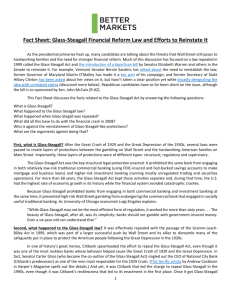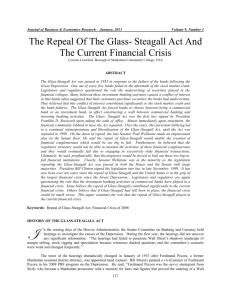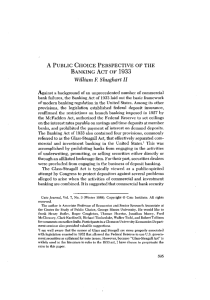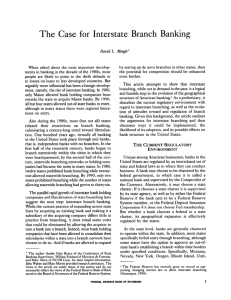Bank Acts
advertisement
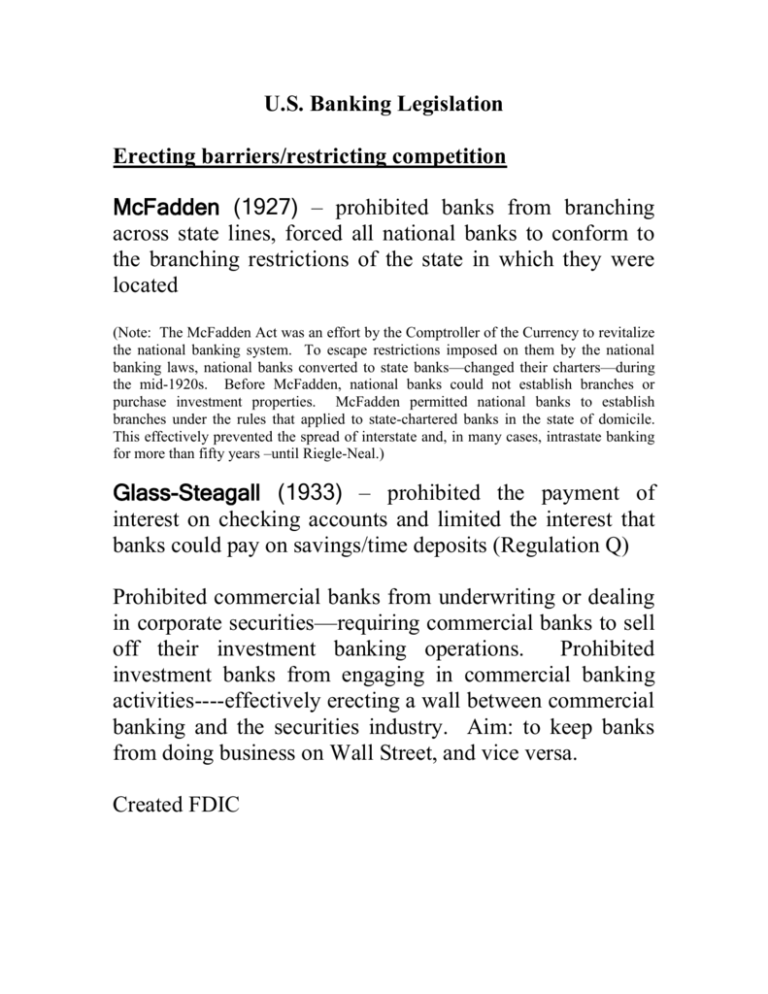
U.S. Banking Legislation Erecting barriers/restricting competition McFadden (1927) – prohibited banks from branching across state lines, forced all national banks to conform to the branching restrictions of the state in which they were located (Note: The McFadden Act was an effort by the Comptroller of the Currency to revitalize the national banking system. To escape restrictions imposed on them by the national banking laws, national banks converted to state banks—changed their charters—during the mid-1920s. Before McFadden, national banks could not establish branches or purchase investment properties. McFadden permitted national banks to establish branches under the rules that applied to state-chartered banks in the state of domicile. This effectively prevented the spread of interstate and, in many cases, intrastate banking for more than fifty years –until Riegle-Neal.) Glass-Steagall (1933) – prohibited the payment of interest on checking accounts and limited the interest that banks could pay on savings/time deposits (Regulation Q) Prohibited commercial banks from underwriting or dealing in corporate securities—requiring commercial banks to sell off their investment banking operations. Prohibited investment banks from engaging in commercial banking activities----effectively erecting a wall between commercial banking and the securities industry. Aim: to keep banks from doing business on Wall Street, and vice versa. Created FDIC Taking down the Walls Depository Institutions Deregulation and Monetary Control Act (1980) - provided for phasing out of Reg Q (interest rate ceiling provisions of Glass-Steagall). Allowed for nationwide spread of NOW accounts (interestbearing checking accounts) Gave thrifts wider latitude (allowing them to compete more directly with commercial banks) Raised deposit insurance to $100,000. Passing thought: wonder what impact that had on risk-taking in banking! Garn-St.Germain (1982)—increased freedom of thrifts to make consumer and commercial loans-thereby increasing direct competition with banks. One step back (toward re-regulation): Financial Institutions Reform, Recovery, and Enforcement Act (1991) – reimposed restrictions on S&L activities FIRREA was passed in the wake of the savings and loan crisis brought on by the failure of some institutions, who made imprudent loans, used poor judgment, invested in junk bonds, and management who conducted fraudulent schemes. The purpose of this Act was to promote a safe and affordable system of housing finance, improve the supervision of savings associations, curtail unacceptable investments by savings associations……. Interstate Banking and Branching Efficiency Act, aka Riegle-Neal (1994) – eliminated prohibition against interstate banking; allowed branching across state lines. In effect, repealed McFadden. Passing thought: wonder why they would be doing that now! Financial Services Modernization Act, aka GrammLeach-Bliley (1999)—repealed Glass-Steagall separation of banking and securities operations. Allowed banks to underwrite securities. Allowed securities firms and insurance companies to purchase banks Allowed banks to engage in insurance and real estate activities on wider basis







